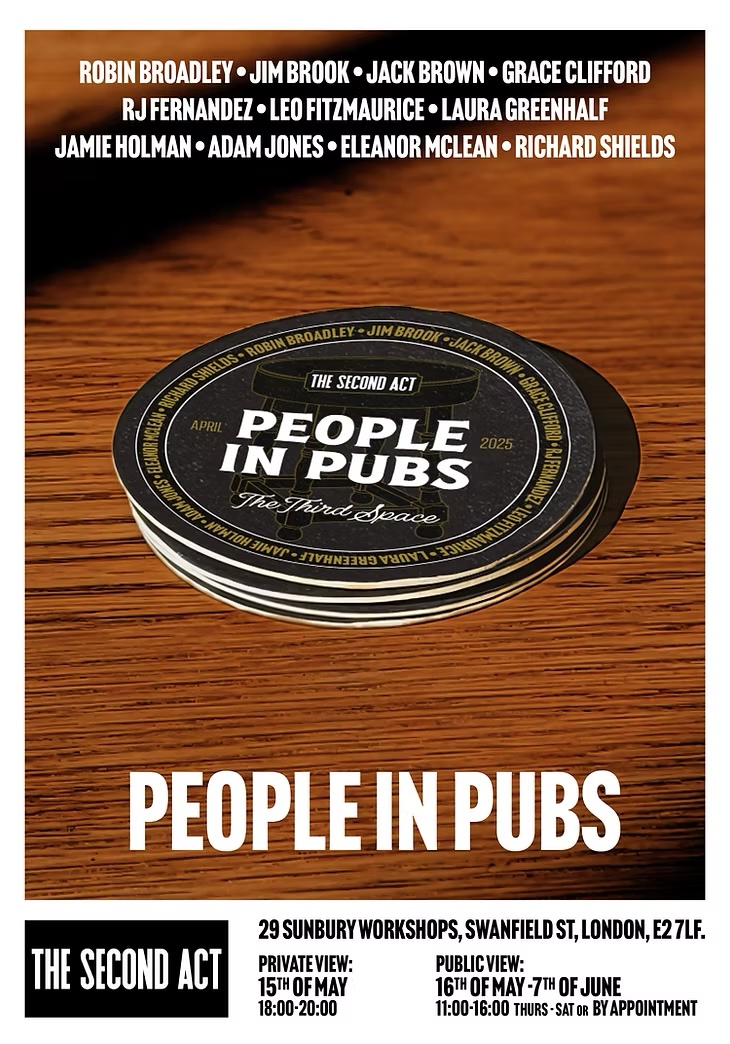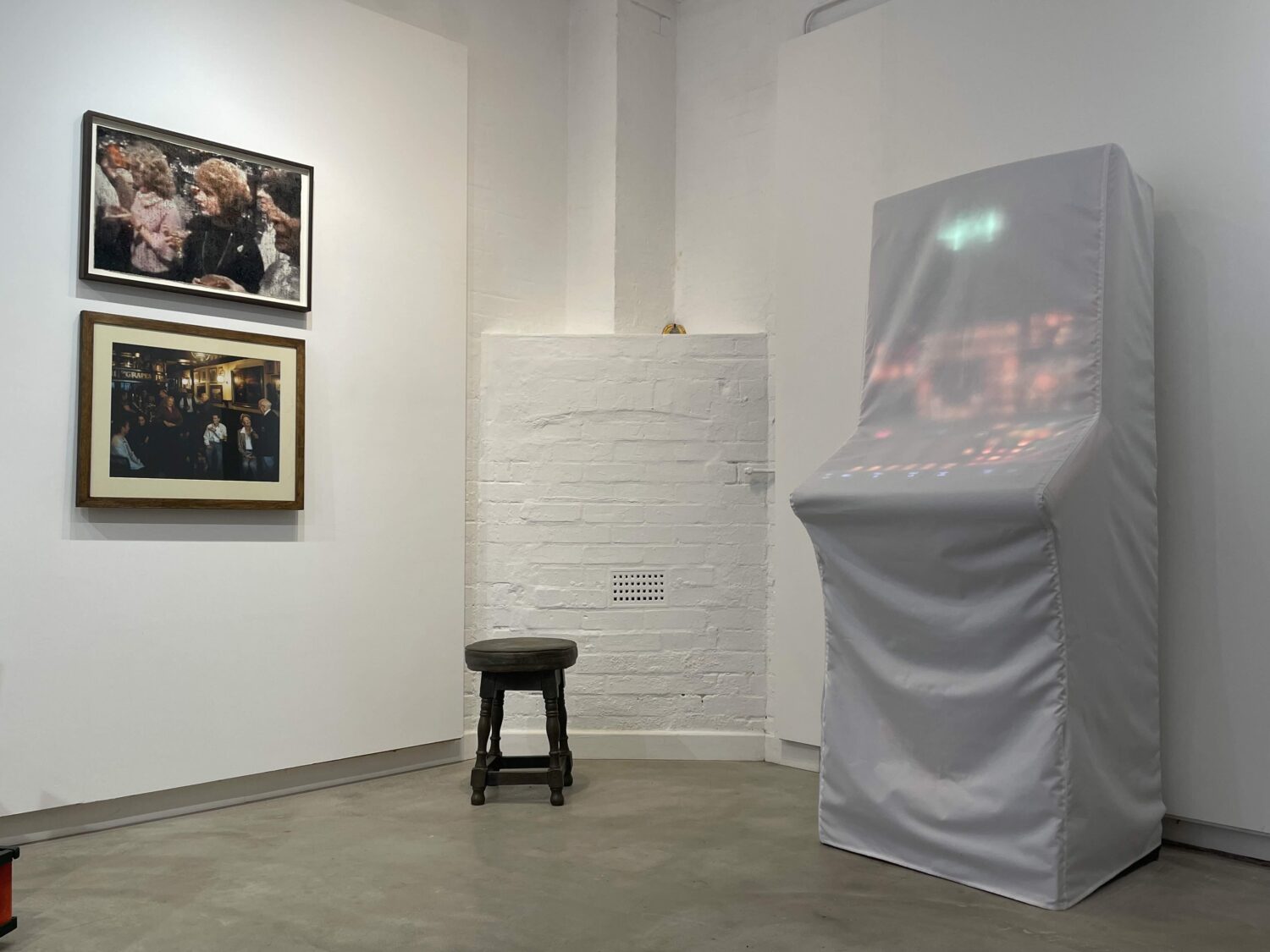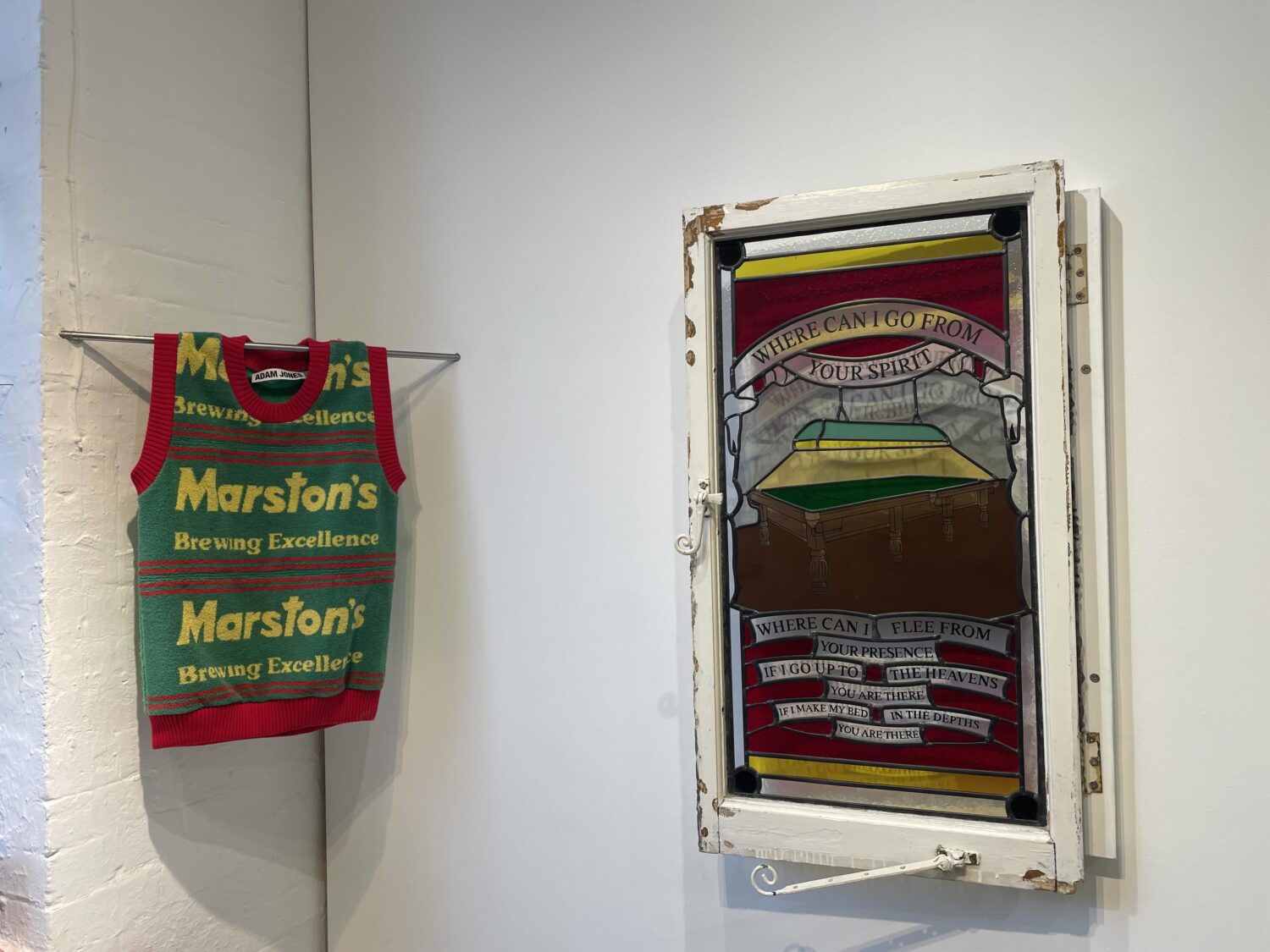‘More Than Nostalgia’: A New London Exhibition Celebrates the Cultural Importance of the Pub
By Lauren CochraneWalk down any London street on a Thursday evening right now, and you’ll see people spilling out of pubs, pints swilling with the possibility and potential of life, and just a bit of silliness. Contrast that, then, with any news story on the fate of these institutions. According to The Guardian, 34 pubs shut every month in 2024, with London the worst hit in the UK. Thinking about it that way, that Thursday pint is all the more important, before such an idea becomes a thing of the past.
This state of affairs forms the backdrop to the exhibition People in Pubs, coming to the Second Act gallery this month. Curated by Alex Zawadzki, it includes work by artists including RJ Fernandez, Leo Fitzmaurice, Jamie Holman and Grace Clifford, all of which celebrates the ephemera and iconography of the public house so ingrained into the UK psyche. Clifford’s bronze bar stool – nine months in the making – both celebrates the familiar and memorialises it, while Fitzmaurice’s beer mat logos takes something more often a bit soggy and neglected and gives it the abstract treatment, with the shapes alone that are displayed. Meanwhile, Covered Fruit Machine, by Jack Brown, is exactly what it describes – but, also, it’s oddly poignant. “It references lots of things in art history, and particularly the shrouding of buildings,” says Zawadzki. “It reflects on this idea of when places closed down, or when stately homes closed, and they cover all the furniture with fabrics.”

Zawadzki says the idea for People In Pubs initially came from Holman, who she shares a studio with, and a piece (also in this show) titled A Memory of People In Pubs, which screenprints stills from a 1982 Chas & Dave Christmas special onto fabric. Part of the appeal derives from how the idea of the pub aligns with Second Act’s wider mission: “I’m trying to put Northern artists and working class artists on the same national and international platforms as other artists,” she says. “It doesn’t have to be flat caps and whippets. [I thought about] what kind of subject matter is going to have a lot of working class artists making work around it, and the pub seems to be it.”
Pubs can be dated back to the nineteenth century, when workers during the Industrial Revolution wanted a purpose-built place to drink (the term ‘pub’ was first in the dictionary in 1859). Zawadzki says they remain central to a working class experience in the UK. “Pubs are foundational as the place where people, the everyday man, would have discourse about society or politics,” she says. “It is how ideas transmit. And I think in a time where political debate and conversation is much more working class led, that often happens in the pub.”
Born in Lancaster, Zawadzki now lives in Morecambe, and works between Blackburn and London. Second Act began in 2020, firstly with one-off projects. The space, which is in London’s Bethnal Green, was opened in 2023. “I was working with all these artists who were thinking there was going to be this Cinderella slipper moment where galleries in the South would come and see them, recognise them, and they just really didn’t,” she says. “It didn’t work that way. We had to take a bit of power back around that and start representing artists up here.”

While she doesn’t drink, Zawadzki has long enjoyed the pub. “I am someone who’s comfortable rocking up with a pint of juice at the bar, and talking to strangers,” she says. “I love it.” She argues the pub needs to be preserved because it fits into sociologist Ray Oldenburg’s idea of the ‘third place’, a term that dates back to the late eighties. “We have our home, we have our workplaces, but the third place is a place that’s entirely sociable,” explains Zawadzki. “You’re not there because you’re doing an activity. There isn’t an intent.” She also credits J Mark Dodds, who campaigns for the preservation of pubs, and is a consultant on the exhibition, for defining the essence. “[He showed me they] were just more than these nostalgic places that should be looked after. He talks about them as something that’s in the crossfire of capitalism, and how we gentrify things.”
Nostalgia is somewhat inevitable when it comes to chatter around pubs, because the symbols of these spaces – beer mats, fruit machines, dart boards, pints – feel retro in their tangibility. Perhaps this is partly why, in a digital-first era where we long for in-person connection, pubs are fashionable once again. Gen Z increasingly name the ‘old man pub’ as a hangout and a place to split the G, while fashion designers like Martine Rose and Paolo Carzana have staged presentations in pubs. “I definitely think there is a mid 20s, 30s creative industry nostalgia around the pub,” says Zawadzki, relaying visiting a pub with two artists that “look super hipster, wearing Wales Bonner with big curly hair and all that stuff.”

Of course, if pubs are on paper a democratic space open to all, they could also be seen as exclusionary – a space primarily associated with white cis men. Zawadzki is keen to point out she wanted to include projects which opened out the experience of pubs to different communities – pointing to Hardeep Pandhal’s sign for the Red Lion Desi pub in the recent Two Temple Place show as a piece she would have liked to have included in her show. “One of the things that for me was a challenge is straight away this is a very white narrative,” she says. “[Pandhal’s sign is part of a] project that was happening around the Birmingham area where South Asian communities have been taking back closed down pubs and turning them into centres of community.”
If People In Pubs pays tribute to pubs in an art gallery space, Zawadzki is still keen to use the pub as intended. What, for her, makes a good pub a good pub? “One that’s about socialising, where people will chat to you. That’s number one,” she says “A place that’s not about the booze, and not a place that’s about getting blind drunk. It’s about social lubrication, that’s the culture of it.”
People in Pubs opens 16 May, 2025 and runs to 7 June at The Second Act Gallery, 29 Sunbury Workshops, Swanfield Street, London E2 7LF.
Lauren Cochrane is Senior Fashion Writer of The Guardian and contributes to publications including The Face, ELLE, Service95, Konfekt and Mr Porter. Based in London, she writes about everything from catwalk shows to footballers’ style and the linguistics of Love Island. She is author of The Ten: The Stories Behind the Fashion Classics.
You can read all of Lauren’s writing on Something Curated here.
Imagery courtesy of Alex Zawadzki and The Second Act Gallery. Header image: Artwork by Laura Greenhalf.